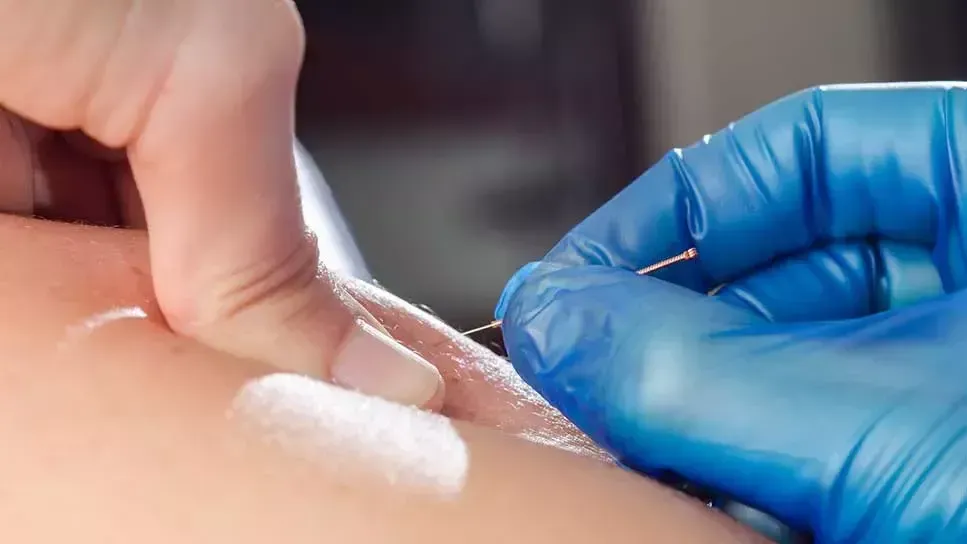As part of a larger treatment strategy, it can help decrease muscle tightness and reduce pain.

A growing number of people, from athletes to people with injuries or chronic pain, swear by dry needling as a way to provide sweet relief for intense muscle pain and mobility issues.
Dry needling, also known as intramuscular stimulation, is a type of trigger point therapy that’s been used for decades — and it’s become an increasingly popular drug-free way to treat musculoskeletal pain.
But how does dry needling work and what can it do for you?
The Benefits of Dry Needling
Dry needling is when a trained, licensed professional inserts thin, dry needles through the skin into the muscle tissue. “Dry,” in this case, means the needles don’t inject anything into the body (like, say, getting a shot).
It’s been shown to:
- Decrease muscle tightness.
- Increase blood flow.
- Reduce pain.
Dry needling can play an important role in muscle recovery and pain relief. Our main focus is muscle and connective tissue and trying to restore mobility.”
Some people feel improvement in their pain and mobility almost immediately after a dry needling session. For others, it takes more than one session.
But to understand how dry needling provides this relief, you first need to understand what’s happening in your muscles.
Dry Needling for Pain Relief
When your muscles are overused or strained, they can develop knotted areas called myofascial trigger points. These areas can be irritable and painful, and they might limit your mobility.
An overused muscle goes through an energy crisis, where its fibers aren’t getting enough adequate blood supply. Without a normal blood supply, the muscle doesn’t get the oxygen and nutrients it needs to be able to return to its normal resting state.
Instead, the tissue around the trigger point becomes more acidic and the nerves become more sensitized, which leads to all that soreness and pain you feel. But when a dry needle stimulates a trigger point, it helps draw normal blood supply back to the area. This helps flush it out and ultimately releases tension.
The prick sensation can also fire off nerve fibers that stimulate your brain to release endorphins — hormones that act as your body’s own natural pain relievers.
What Does Dry Needling Feel Like?
Dry needling practitioners feel for trigger points with their hands. They may also use a trigger point map, which shows common areas on the body where trigger points are likely to develop.
Once they locate a trigger point, they insert a needle directly into it, through your skin.
They might move the needle around a bit to try to prompt what’s called a local twitch response, which is a quick spasm of the muscle. This reaction is a sign that the muscle is reacting to the treatment.
After a dry needling session, you may feel some soreness or tenderness for 24 to 48 hours.
It’s important to continue to keep the affected muscles loose by continuing to move them within their new range of motion after treatment.
Side Effects of Dry Needling
Dry needling is considered very safe, with very little risk of complications. You might feel some stiffness, soreness or bruising at or around the area of your trigger points. In rare cases, you could experience bleeding or infection.
Acupuncture vs. Dry Needling
Dry needling and acupuncture may seem very similar — after all, they both involve inserting fine needles into your skin — but from a medical perspective, they’re actually quite different.
Acupuncture comes from traditional Chinese medicine and is about trying to balance your body’s energy flow, known as qi.
Acupuncturists insert needles into “acupoints” that are thought to stimulate qi, which prompts your body to fight your illness or symptoms.
Dry needling, on the other hand, is a Western medicine treatment that targets the specific trigger points that are causing you pain or limiting your mobility. Like other physical therapy treatments, dry needling targets muscle dysfunction to relieve pain and tension.

